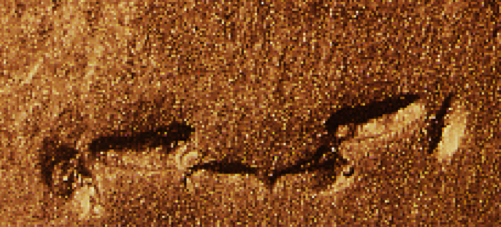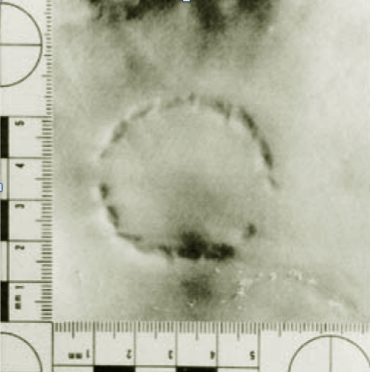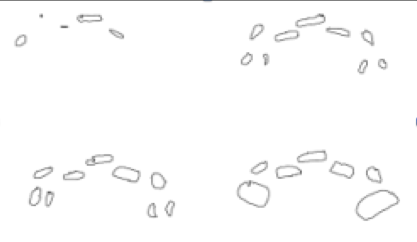In the past, we have blogged on the severe limitations on pattern recognition as a forensic science discipline. (Pattern Recognition is it Science or an Art?). In fact, the National Research Council of the National Academy of Sciences pointed to one form a pattern recognition as being most problematic: forensic odontology.
Most broadly defined, it is the practice of applying dental principles to the legal world. It can be used in mass disaster events to help identify the dead. In the courtroom, forensic odontology is predominantly in the form of bite mark evidence.
Forensic odontology has been with us as admissible evidence in the United States since 1849 which is nearly 50 years longer than fingerprints. J.W. Webster was convicted for the murder of George Parkman after his incinerated remains were identified by Nathan Cooley. Cooley was a dentist who had made partial dentures for Parkman. Cooley came into court and identified the charred remains of the body and concluded source because he physically took the dentures and placed them into the casts. He thought they were a “perfect match.” It was the identification of the body that was accomplished by the comparison of these dentures to the casts alone that lead to conviction. Webster was put to death. A more famous case of where forensic odontology was used is that of serial killer Ted Bundy who left a bite mark on the buttock of a victim, which helped secure his conviction in 1978. He too was executed by the government.
Like the application of most pattern recognition disciplines there are large issues.
- In the courtroom there are no specific requirements for practicing forensic odontology. In fact, one does not even need to be a practicing dentist.
- The analysis undertaken is largely arbitrary and subject to the whim of each examiner. There are no universally accepted or practiced protocols or instructions as to how the analysis must be undertaken (no standards).
- There is insufficient study that the techniques used can correctly identify specific or unique source, meaning that the marks left (the unknown) can be traced and attributed uniquely to one specific source.
- A person’s dental profile changes over time.
- Frequently there is unequal application of force in the real world. The bite itself made in the real world and in uncontrolled conditions is totally different than the exemplars that are taken with equal application of force and under controlled conditions.

- If the impression that is the unknown is left on skin, the medium (the skin) can change over time and as the bite-mark heals or the body decomposes, and therefore distort the original impression left. What few studies that have been completed were not done on humans, but rather on pigskin. Pigskin and human skin behave in dynamically different ways due to differences in elasticity.

- Each dentition can produce variable impressions and can change based on pressure and surface of contact.

- It is not highly regulated or monitored and has virtually non-existent Quality Assurance safeguards.
In fact, as reported in the New York Times story “Evidence From Bite Marks, It Turns Out, Is Not So Elementary,” the rate of false positives is alarming (up to 65 percent as referenced in the article that refers to a study)
Critics of bite mark comparison cite the case of Ray Krone, an Arizona man convicted of murder on bite mark evidence left on a woman’s breast. He was 100% positively identified as being the only source for the bite mark. He was later exonerated by DNA. Similarly, Roy Brown was convicted of murder due in part to bite-mark evidence, and freed after DNA testing of the saliva left in the bite wounds matched someone else.
The very basic technique and analysis employed by most forensic odontologists is as follows:
- Bite marks are photographed with a scale
- Bite marks on skin are taken over repeated intervals
- Casts of impression are taken
- Impressions are traced onto transparencies
- Casts of suspects teeth are taken
- Comparison between suspect cast and bite mark
And then there are cases of downright failures of human integrity where fraud is committed such as this story:
Video Shows Controversial Forensic Specialist Michael West Fabricating Bite Marks
According to that report:
On Aug. 9, The Huffington Post reported on the case of Leigh Stubbs, a Mississippi woman serving a 44-year sentence for assault and drug charges. Stubbs was convicted in large part due to the testimony of Michael West, a disgraced bite mark specialist. Though West has been largely discredited, prosecutors and state officials in Mississippi (and to a lesser extent in Louisiana) continue to defend convictions won based on his testimony.
In Stubbs’ case, West presented two key pieces of evidence. The first involved the bite mark wizardry that made him famous, and then infamous: West claimed to have found bite marks on alleged victim Kim Williams that medical personnel hadn’t seen. He then used a dental mold of Stubbs’ teeth to perform an analysis on the marks, and would later testify that it was a “probability” that Stubbs had bitten Williams.
FABRICATING EVIDENCE
On Wednesday, forensic specialists Mike Bowers and David Averill posted a video recording of West’s examination of Williams on their site, Bitemarks.org. In his initial examination, West claims to have “missed” the evidence of a bite mark. He testified he found it in a a subsequent examination performed days later. That examination is depicted in the video below. Note that at the 50-second mark, a bite mark appears in Williams’ skin, seemingly out of nowhere.


